T-shirts were originally worn as a form of undershirt, just like a vest. It was used by men with high laboring jobs where they could easily remove the uniform and continue working in the undershirt under extreme climatic conditions. As the fashion industry emerged towards a new era, men have started wearing t-shirts just as it is, without layering another type of clothing on top.
T-shirts are, to date, the easiest form of clothing that has no complications whatsoever and is totally budget-friendly. Every age group has a minimum of one set of t-shirts in their possession. No matter what country or continent he is from, t-shirts have actually solved every problem for all genders and ages. It does not require a hefty amount of time to dress up for any occasion, just pair it up with jeans or chinos or adorn a blazer on top and you are good to go.
Celebrities and musicians play a big part in starting a trend, and t-shirts have proved to be their favorite when it comes to experimentation. A few trends have also turned up over the last decade, where pop culture has started using sleeveless t-shirts and oversized ones reaching up to their thigh. Even extremely oversized t-shirts or layering of a short-sleeved t-shirt over a long-sleeved one is a recurring phenomenon nowadays.
[adinserter block=”3″]Well, if you are a fan of T-shirts as well and looking to find a perfect fitting T-shirt for you, here is a distinctive size guide we have presented with illustrations according to the body type and shape. Explore the chart and see how to measure your body efficiently and always pick the best fitting T-shirt for you.
Also Check:
- ▶Women’s T-Shirt Size Chart & Conversion
- ▶Women’s Shirt Size Chart & Conversion
- ▶Men’s Shirt Size Chart & Conversion
Men’s T-Shirt Measurement Illustration
Men’s Clothing Sizes – What Do They Mean?
The size of clothing refers to the label that is found inside the collar or the neck area of a shirt or t-shirt and inside the waistline or sometimes at the backside near the pocket of trousers or jeans.
While purchasing any type of clothing online, one must note down the measurements of his body and tally those with the chart provided by that brand. He can easily find out his preferred size.
[adinserter block=”3″]Clothing sizes can usually be determined by measuring the important areas of one’s body in terms of fitting. For men, the measurement of neck, bust, shoulder, sleeves, waist and hips are important to be noted down while purchasing a t-shirt from any brand online or directly from the store.
What is a Men’s T Shirt Size Chart and How Do I Use It?
Men’s t-shirt size chart follows a pattern of numbers and letters all over the world. It is important to look for the correct size while ordering from different brands. For example, if a man wears XL of some brand, he should first look for an XL size and check the fittings. If it does not fit properly, then he should look for a size larger or smaller.
Let us find out a uniform size chart that can be referred to while purchasing a garment:
| Size | Sleeve | Waist | Chest | Neck |
| 5XL | 38½-39″ | 58-60″ | 62-64″ | 22-22½″ |
| 4XL | 38-38½″ | 53-55″ | 58-60″ | 20½-21″ |
| 3XL | 37-38″ | 48-50″ | 54-56″ | 19-19½″ |
| 2XL | 36-37″ | 44-46″ | 50-52″ | 18-18½″ |
| XL | 35-36″ | 40-42″ | 46-48″ | 17-17½″ |
| L | 34-35″ | 36-38″ | 42-44″ | 16-16½″ |
| M | 33-34″ | 32-34″ | 38-40″ | 15-15½″ |
| S | 32-33″ | 28-30″ | 34-36″ | 14-14½″ |
Nowadays, most brands are inclusive regarding the size range. Plus-sized apparels are common nowadays. One can easily find new brands while scrolling down the social media feed. This is the reason high-end brands are also coming with inclusive sizes to keep the competition going.
From the above chart, we can easily find out the required size from the numbers given under the specific headings (neck, chest, waist and sleeves). One has to measure the required body part and tally it with the chart.
[adinserter block=”3″]Can You Measure Men’s Clothing Proportionately? What are the Best Measurements?
Men’s clothing, as a whole, has various sections and sub-divisions. It is impossible for one to buy a t-shirt with a uniform measurement. For example, regular fitted shirts measure differently than a body-hugging t-shirt. On the other hand, a jumpsuit has a different set of measurements altogether. It is extremely difficult to purchase a t-shirt based on the measurement of a coat or jumpsuit. Hence, a proper way should be followed while measuring a t-shirt.
Though the sleeve, neck and bust measurements remain similar in all the type of clothing preferred by men, it is only the hips and leg measurement that constantly needs to be noted down while purchasing clothing meant only for the lower body, like jumpsuits, jeans, joggers, chinos and shorts.
How to Find The Right Size for Your T-Shirt?
Finding the right size in clothing can be really hectic if one isn’t aware of his body type and preference. For example, a person preferring a cotton t-shirt might end up buying a rayon t-shirt that sits perfectly on his body. The material plays a significant role in buying clothes. Cotton usually has a tendency to shrink by about 80%, which should be kept in mind while purchasing pure cotton tees.
The lettering and numbering system of sizes displayed on the label can be confusing at times when the accurate measurements are not mentioned. If a t-shirt becomes a holy grail for one, in terms of fit and feel, he should keep that t-shirt as a reference for his future purchases. He might even start exploring similar types of material from that particular brand.
[adinserter block=”3″]Let us find out the tips and tricks to find out the accurate measurement of the body parts required to purchase a t-shirt:
Bust:

The bust should be measured by keeping the tape around the fullest part of one’s chest after relaxing the hands on both sides and standing straight. There should be a gap of one or two fingers in between the tape and the body to ensure a relaxed fit. The tape should be kept below the armholes to get the perfect numbers.
Neck:

In case of the neck, one must circle the tape around the circumference of one’s neck and keep it just below the Adam’s apple to get a correct measurement. There should be a gap of at least a finger in between to make sure the clothing is well-ventilated during summers.
Shoulder:
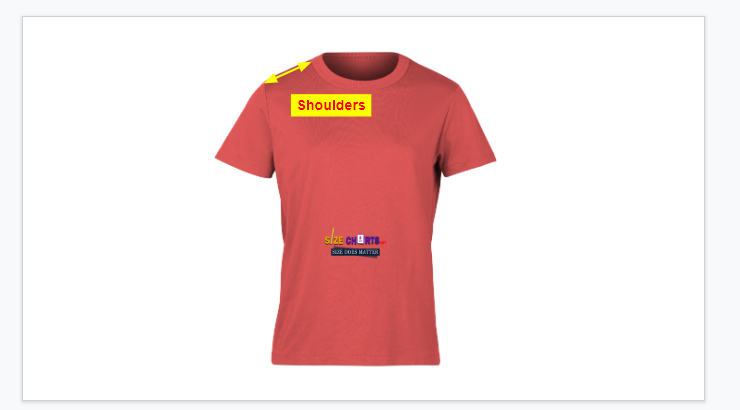
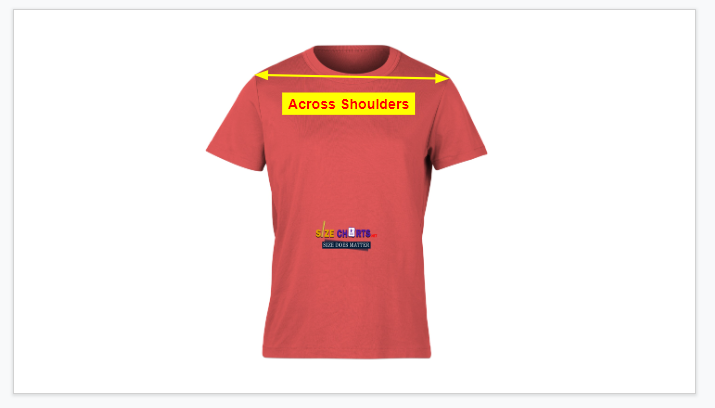

The shoulders should be measured on either side by placing the tape between the collar and the shoulder joint.
Sleeves:
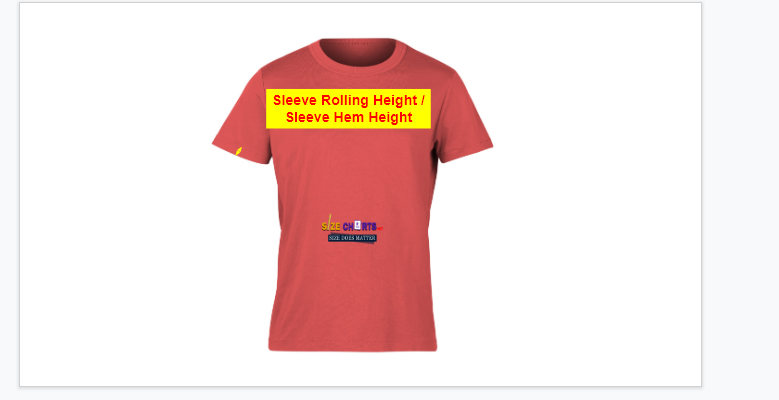
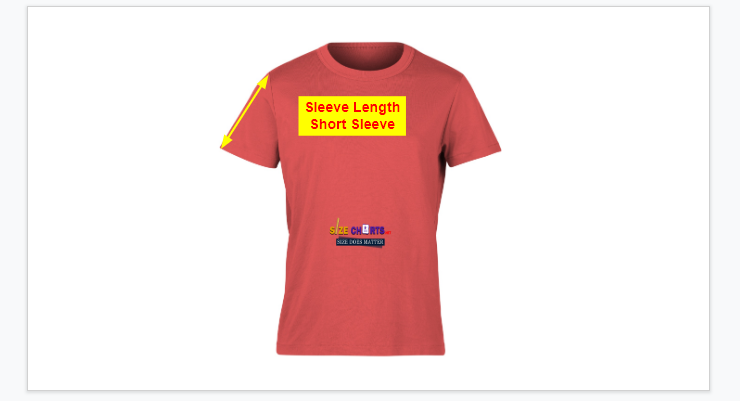
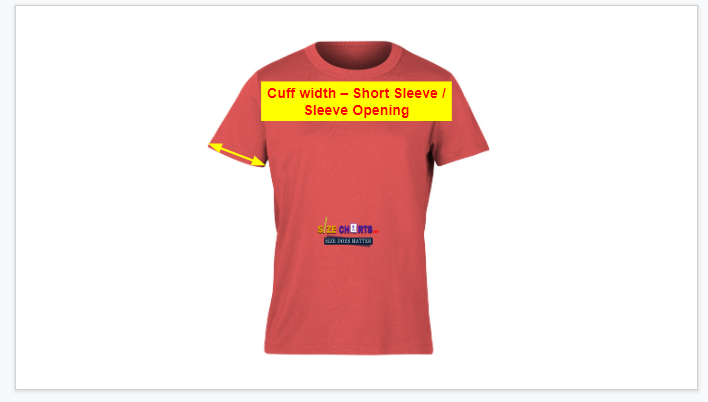
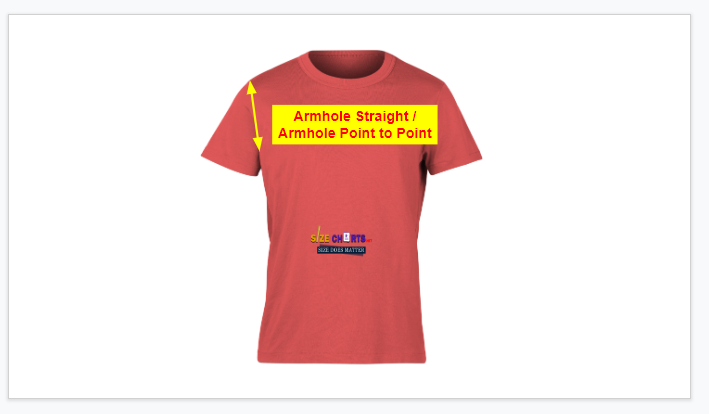
Sleeve measurement is necessary in case of short-sleeved and long-sleeved t-shirts. The measurement should be taken right from the shoulder joint till the elbow and then from the elbow up to the wrist for a long-sleeved t-shirt. The circumference of the arm is also required in case of snug-fitted tees.
Waist:

In case of waist measurement, one must refer to the smallest part of one’s torso, just above the belly-button and place the tape there to note down the numbers.
Hips:
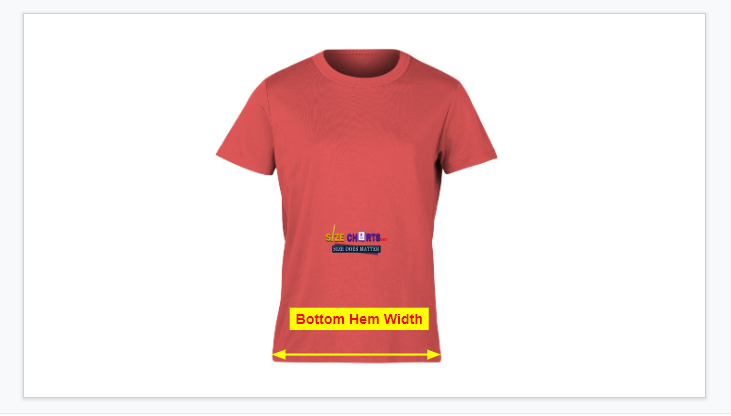
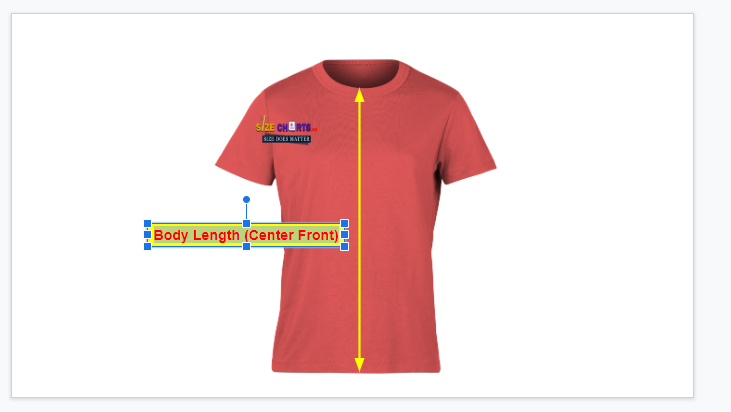
Measurement of hips is not always required. It is needed when one wishes to buy a long t-shirt that covers the buttocks. In such cases, one must place the measuring tape above the curve of the buttocks to get a proper number for reference.
What Are The Different Types Of T-Shirts Available for men?
Often we find men wearing similar styles and patterns of t-shirts. Or, when a man buys a t-shirt for the first time, he feels like there are limited options but that is not true. There are various other options to choose from. One needs to know the types and patterns of t-shirts in order to purchase a different style.
Here are some of the most common T-shirt styles available in the market. They are:
[adinserter block=”3″]Crew neck style-
We are very familiar with crew neck or round neck t-shirts. 3 out of 5 men have worn this style on a regular basis. Undoubtedly this is the comfiest and the simplest outfit from one’s wardrobe. It can be paired up with jeans, joggers, shorts or chinos for a casual morning outing or a late night date.
V-neck style-
The V-neck style comes just after the crew neck in terms of popularity. This can be paired with jeans and joggers or even worn under a suit for an office meeting.
Scoop neck style-
The Scoop neck is an extended version of the crew neck style where the neck seam hangs a few centimeters below the neck in the form of a scoop. It is a more funky type of t-shirt and is mostly worn by young adults to look dapper.
Henley-Y neck style-
Henley-Y neck t-shirts usually have a round neck with buttons running down towards the midriff in the shape of the alphabet Y. The buttons can be kept open or closed according to the preference of the person wearing them. It looks good with jeans and chinos.
Short sleeves style-
These t-shirts have a shorter sleeve ending just above the elbow. They come in various patterns and colors.
Long sleeves style-
Long-sleeved t-shirt ends at the wrist if worn true to the body size or it may reach till the palm if worn oversized.
Cap sleeves style-
These bring a twist to the regular sleeves creating a cap-like extension without covering the armpits. These are longer than sleeveless vests and shorter than half-sleeves.
Raglan sleeves style-
Raglan sleeves have come way later in the fashion industry. They have a distinctive sleeve pattern which is totally in style now. Their sleeves run diagonally from the neck seam to the wrist or elbow, depending upon the length of the sleeves. The sleeves are usually in a contrasting color, mostly dark, whereas the rest of the t-shirt is in a lighter shade.
LONG & SHORT SLEEVE T-SHIRTS & POLO T-SHIRTS SIZE GUIDE
The name ‘Polo’ was chosen by Ralph Lauren during the year 1960s to portray timelessness and sophistication. Polo t-shirts are usually snugly fitted and they tend to cling to the body. These run till the waistband and never go beyond that. These shirts have a collar and two or three buttons running down from the collar till the upper torso.
| SIZE | TO FIT CHEST SIZE | |
|---|---|---|
| CM | INCHES | |
| XXXL | 116-121 | 46-48 |
| XXL | 111-116 | 44-46 |
| XL | 106-111 | 42-44 |
| L | 101-106 | 40-42 |
| M | 96-101 | 38-40 |
| S | 91-96 | 36-38 |
| XS | 86-91 | 34-36 |
| XXS | 81-86 | 32-34 |
| XXXS | 76-81 | 30-32 |
Men’s T-Shirt Size Comparison Chart–UK<>AUS<>EU<>JAPAN
As we have discussed earlier, t-shirts are worn by every age group across the world. From east to west and north to south, t-shirts are a definition of comfort and class.
The US, the UK and Australia follow the same measurement pattern in inches. It would not be a problem if one wishes to buy a t-shirt from any of these countries as he does not have to get confused by seeing the size references.
[adinserter block=”3″]On the other hand, Europe, Japan and Korea have an altogether different sizing system compared to the rest.
| US / International. Size |
US/UK Size | AUSTRALIA | Euro Size | JAPAN | French Size | Italian Size |
|---|---|---|---|---|---|---|
| XS | 13.5-14 | 34 | 35-36 | 0 | 37-38 | 38-39 |
| S | 14.5-15 | 36-38 | 37-8 | 1 | 39-40 | 40-41 |
| M | 15.5 | 38-40 | 39-40 | 2 | 41-42 | 42-43 |
| L | 16-16.5 | 40-42 | 41-42 | 3 | 43-44 | 44-45 |
| XL | 17-17.5 | 42-44 | 43-44 | 4 | 45-46 | 46-47 |
| XXL | 18-18.5 | 44-46 | 45-46 | 5 | 48-50 | 49-52 |
| 3XL | 19-19.5 | 46-48 | 47-48 | 6 | 52 | 54 |
| 4XL | 20-20.5 | 50-52 | 49-50 | 7 | 54 | 56 |
In order to purchase t-shirts from international brands, one should obviously look for the conversion table/chart and refer to that. The numbers may also vary from brand to brand.
What size chart should adolescents follow?
Adolescents have a different size chart altogether because of their rapid growth and bone enlargement. They have a column of numbers followed by the age (in months or years) to make it easier for the parent while purchasing a garment.
It should be kept in mind that t-shirts made of expandable materials can be purchased according to the accurate body size but other materials, mostly cotton and cotton blends should be purchased a size larger because of the shrinking tendency of cotton.
It is always advisable to look for a size larger while purchasing clothes for growing children, especially males. Children involved in active sports like swimming, cycling and gymnastics tend to grow taller rapidly.
| SIZE | A-SHOULDER (CM) |
C-TOTAL LENGTH(CM) |
B-CHEST(CM) |
|---|---|---|---|
| 44/XL | 46 | 76 | 54.5 |
| 42/M | 44 | 74 | 52 |
| 40/M | 42 | 72 | 49.5 |
| 38/S | 40 | 70 | 47 |
| 36/15-16 Years | 38 | 69 | 46 |
| 34/13-14 Years | 36.5 | 65.5 | 44 |
| 32/11-12 Years | 35 | 62 | 42 |
| 30/9-10 Years | 33.5 | 58 | 40 |
| 26/7-8 Years | 30.5 | 55 | 36.5 |
| 26/5-6 Years | 28 | 51 | 35 |